To Carve the Corned Beast
I have a tendency to obsess over things.
No, not you, Jim! Not the guy who wrote a 4000 word history of club sandwiches earlier this month!
Yes, me, hard as it may seem to believe. And though it’s a pain in the ass to the people close to me–you have no idea how sick my friends and family are of hearing about sandwiches–I think it’s helpful, sometimes, when I’m writing about a sandwich, as I tend to focus in on that sandwich really hard.
But I’ve had other things on my mind for a couple of weeks, and I don’t think I’ve been able to give the past few sandwiches their due. My crisp sandwich post was, if not substandard, at least cut short, and now, with corned beef, I’ve kind of been on autopilot. I hope I can shake it off, as I’d hate for the 1 year mark to be when our List jumps the shark, but only time will tell. For now, I can only suggest that if you’d like to read an interesting and well-written piece on corned beef, you try the one Brian posted here yesterday.
Corned beef is pretty amazing stuff though. It’s certainly a long-time favorite of mine, about which I already some definite ideas coming into this post, including how much I could imagine eating.
Things I will apparently keep eating until I pass out or my stomach explodes, pt 1: corned beef. potstickers. (not necessarily at same time)
— Sandwich Death Panel Czar (@JimBehymer) March 23, 2011
Corned beef, you probably already know, has nothing to do with corn. The word corn that we use to refer to maize, actually describes a certain small compact shape common to peppercorns, salt, and many other grains and spices–it’s a form of “kernel.” The “corned” in corned beef refers to the curing process, in which salt and spices–and sodium nitrite–are used to preserve the beef, giving it its bright pink color along with its aromatic qualities and its salty flavor. In fact, in the UK and elsewhere, corned beef is usually referred to as “salt beef.”
My initial thought for this post was that I’d acquire a full packer-cut brisket, cure it, and make my own corned beef sandwiches to show the full process. My club sandwich research ended up adding a twist though–so many of these 100+ year old sandwich recipes I went through called for boiled beef tongue. It got me wondering, so I researched tongue preparation methods, and many involved brining with spices before the boil–essentially “corning” the tongue as well.
So in addition to the 14lb brisket, I also picked up a pair of 3lb beef tongues. As mentioned in my crisp sandwich post, I removed the point from the brisket to make smoked brisket sandwiches, which turned out terrific. I made a brine using the basic ratio from the Ruhlman/Polcyn book Charcuterie, with a pickling spice mix from the Spice House in Chicago along with a few additions of my own–a little extra black peppercorn, juniper, garlic, bay leaf, and a single star anise. The brisket flat and the two tongues brined for 10 days, then soaked in water for another 24 hours to remove a bit of the excess saltiness, before they were ready to cook.
I’ve had a lot of good corned beef sandwiches in my day, and the best ones are usually the most simple, just a pile of meat on rye with pickles and mustard on hand to add if needed, and maybe some horseradish in case the mood strikes me. I’ve also had bad ones. The worst I ever had was from a local sub shop (to remain unnamed) that advertises hot corned beef and roast beef sandwiches on its sign. I took them at their word and ordered the corned beef, hot, with whatever they normally put on it. They took a bad, soft sub roll, added some cold corned beef, mayonnaise, mustard, onion, pickle, tomato, and lettuce, wrapped it up in paper, then put it in the microwave for 30 seconds. I was aghast.
So I had this idea in my head that I not only knew the best way to make a corned beef sandwich but also that I knew the best way to prepare the corned beef–gently steam it for a few hours, then hand-slice it before making sandwiches. However, things don’t always turn out the way I expect.
For instance, after having the brisket and one of the tongues in the steamer for 2 hours, I opened the lid to find that much of the fat and gelatin had already rendered, raising the water level above the steamer grate and drowning the bottom half of my brisket. The temperature was already approaching 200, almost hot enough to shred the brisket instead of slicing it. I quickly removed it from the steamer and rested it on the counter for a few minutes, before attempting to slice it by hand. But the hand-sliced portions were too thick and tough to be usable for sandwiches.
So out came the deli slicer to save the day. With it, I was able to slice the meat thin enough to be perfect for sandwiches. And without patting myself on the back too hard, I must admit that the flavor of the corned beef was far better than any I’d ever bought in a store.
The next day, I stopped by one of my favorite places in Chicago to get a corned beef sandwich, Moon’s Sandwich Shop. It’s a tiny little diner on Western Avenue that doesn’t look like much from the outside.
It doesn’t look like much from the inside either, with one long irregular counter for seating, taped-up barstools, and a dirty ceiling–but behind that counter, the staff is bustling, and they’ve got a way with corned beef, grits, and all manner of simple diner fare. I sat at the counter, declined the offer to buy some pirated DVDs from the friendly fellow next to me, and waited to have my order taken. My entrepreneurial neighbor called the owner over for me.
“Corned beef sandwich,” he asserted as he approached me.
What could I say? He’d seen me coming a mile away. “Yeah, exactly. No tomato or lettuce though,” I specified, as they’ll serve it with greenery by default.
“I’m just gonna give you some mustard and pickles, and a tiny swipe of mayo.”
“No mayo either, just the mustard and pickles please.”
“Suit yourself,” he said. “It’s good that way though.”
He turned around and began slicing a hunk of corned beef paper-thin on a deli slicer, piling it high on some unseeded rye bread and adding mustard before cutting it in half and putting a pile of thick pickle slices on the plate next to it. He turned around and placed it on the counter in front of me. “Don’t hurt yourself,” he warned.
This was a big sandwich.
I ate half of it while sitting and enjoying the atmosphere of a classic old-school Chicago diner. During a slow moment, I asked them what the best way too cook the corned beef was. Did they steam it? “We just boil them in big pots in the back,” was the reply.
After a while, I asked for the other half of my sandwich to be wrapped up to go.
“I told you not to hurt yourself,” he said.
“I’ve been here before, I knew what I was getting into,” I replied, to general laughter.
But what about that corned beef tongue? Well, another variant of the corned beef sandwich I was interested in is called the “salt beef bagel,” a sandwich that came to being among the Jewish population in east London. It’s a bagel with corned beef and mustard and pickle, though sometimes cream cheese comes into play as well. The next day, my family was picnicking at the Starved Rock state park in Illinois and, though the salt beef bagel is generally served hot, I packed one along for my picnic lunch.
I used cream cheese, corned beef tongue, pickled asparagus, Colman’s English mustard, and some horseradish cheddar that smelled too good to leave out. The tongue seemed to have taken on less of the cured flavor than the brisket, whether due to its relative density or some other factor, so the organ meat flavor came through in equal measure to the aromatics and salt. I think I could have left out either the cream cheese or the cheddar, as having both in there took focus away from the meat, but it was still an enjoyable meal after a hike of several miles.
So that’s the brisket point, the flat, and one of the tongues that I’ve covered. What did I do with the other tongue? Tongue pastrami. Very tasty, but not relevant to this post.
I’m not sure I’ve learned much in writing this post, other than that bagels are also a perfectly fine delivery method. (Yes, onion rolls are pretty great too.) Simmering and cutting with a deli slicer may be the easiest way for me to handle corned beef at home (YMMV if you don’t have a deli slicer), but I’ve also been to enough delis to know that steaming and hand-slicing can bring out the best in the meat. Either way, it should be cooked until tender, but not until falling apart, and sliced across the grain, so that the pieces of meat separate easily when biting through a sandwich.

I like sandwiches.
I like a lot of other things too but sandwiches are pretty great


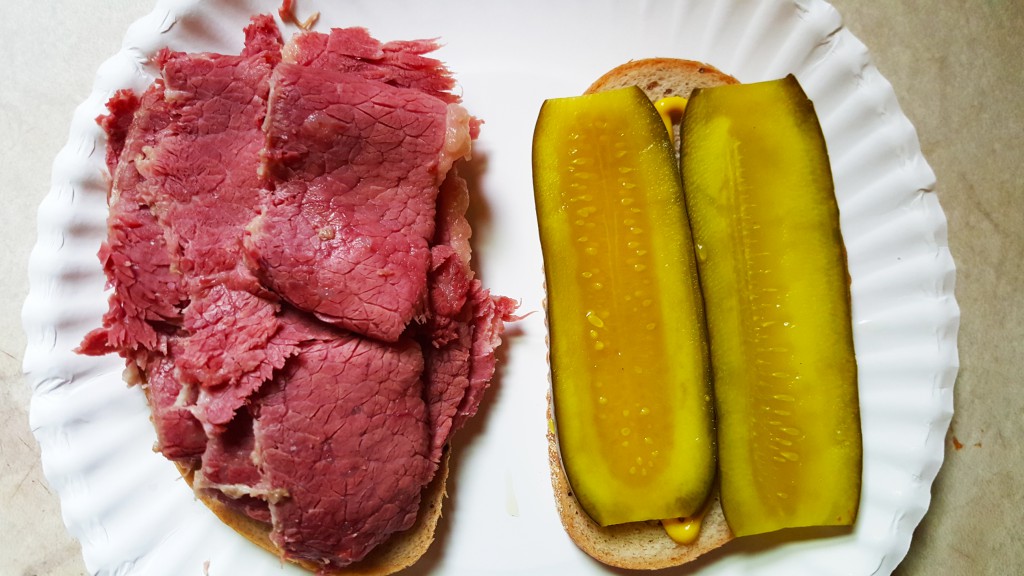

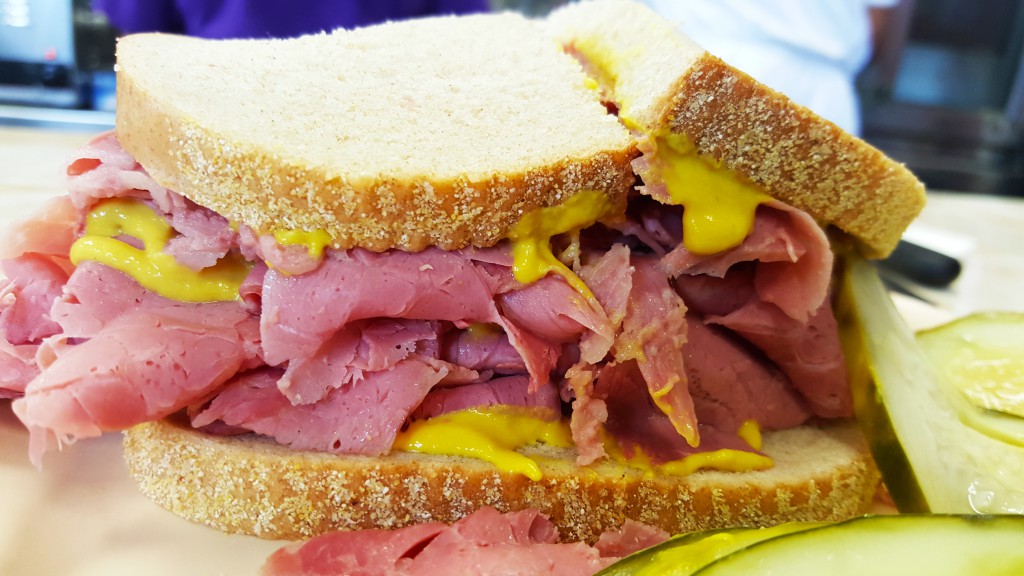
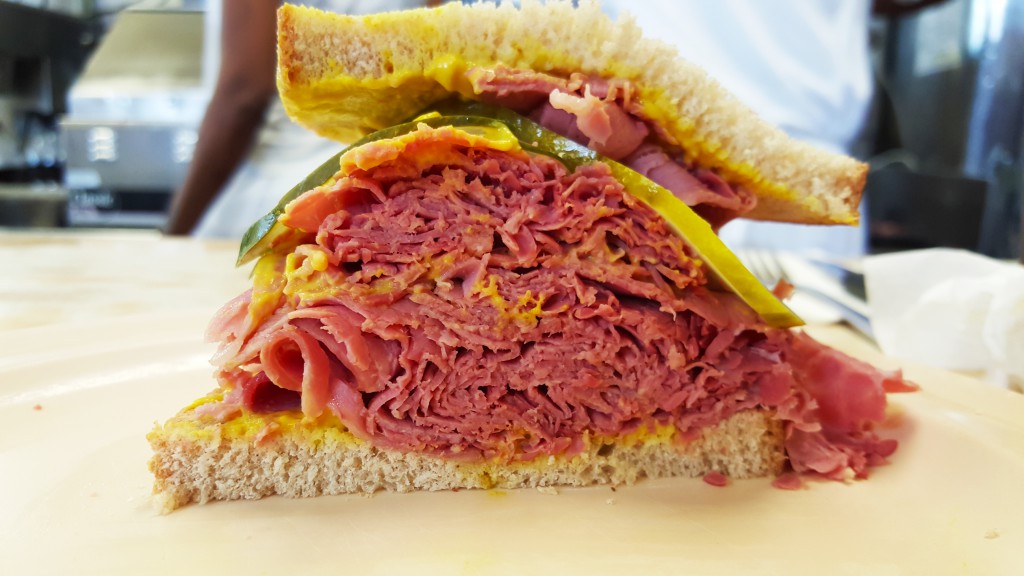
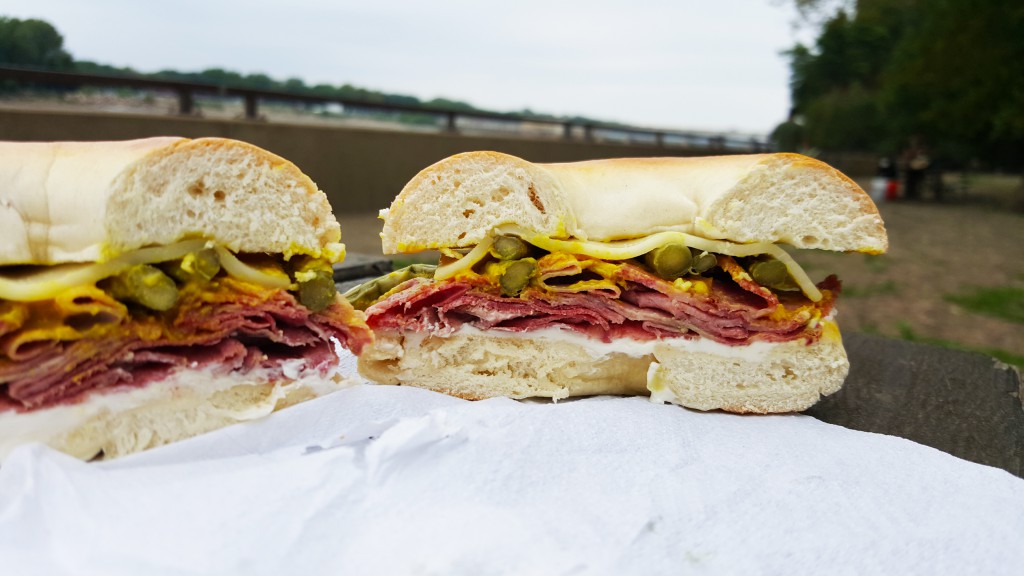

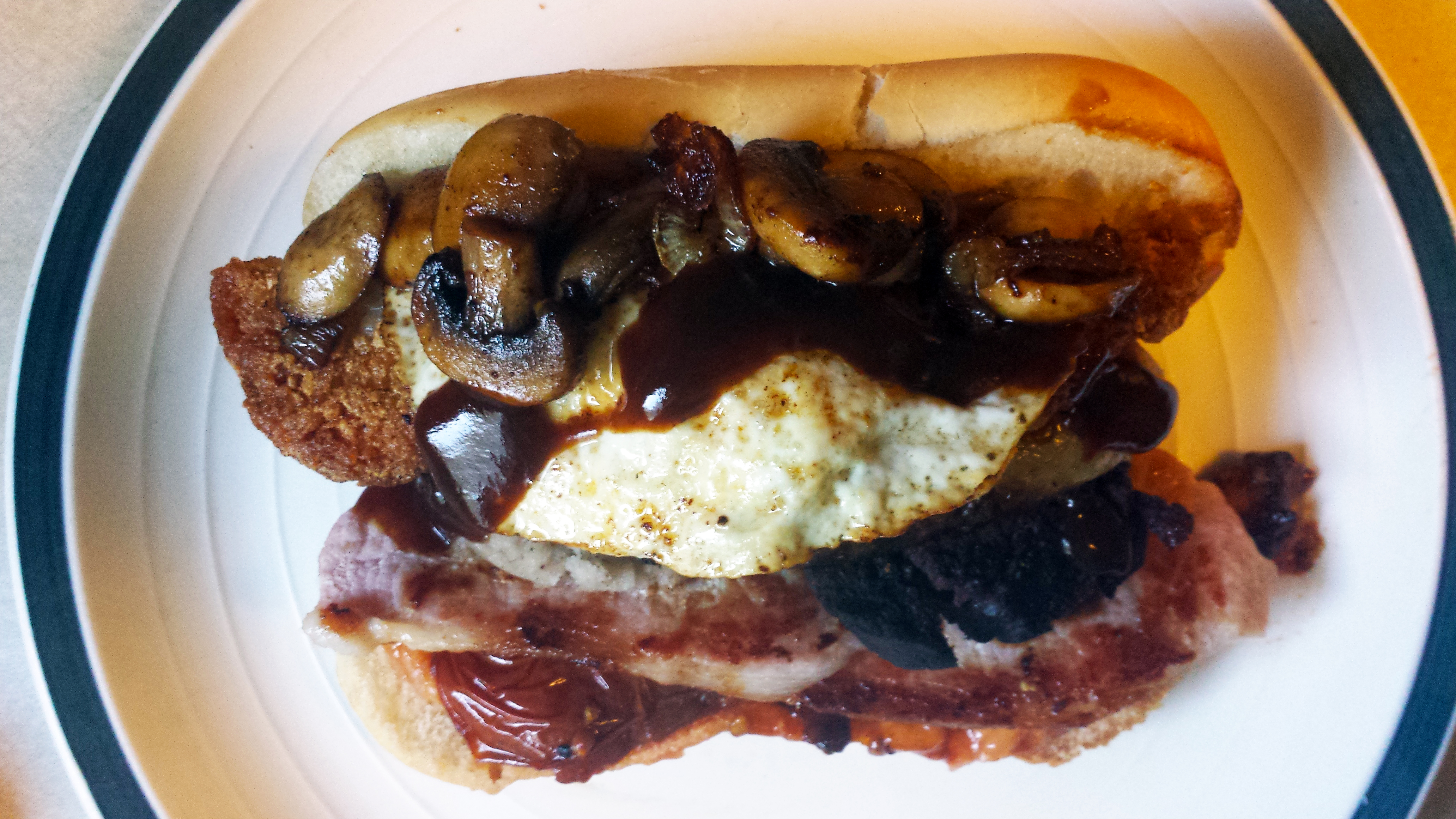







Loved your post. Corned beef is simmering in Killians irish red , no salt beef stock, onions, and a few smashed garlic cloves. I have to try the tongue idea. Anyway, fun read. Thanks.